|
Monday, February 21, 2011
Progress Notes
A few months ago I was contacted by Walter Lewis of St. Louis (photo 01a), who is a great grandson of the Iberia patriarch, Squire John Ferguson (photo 01b).
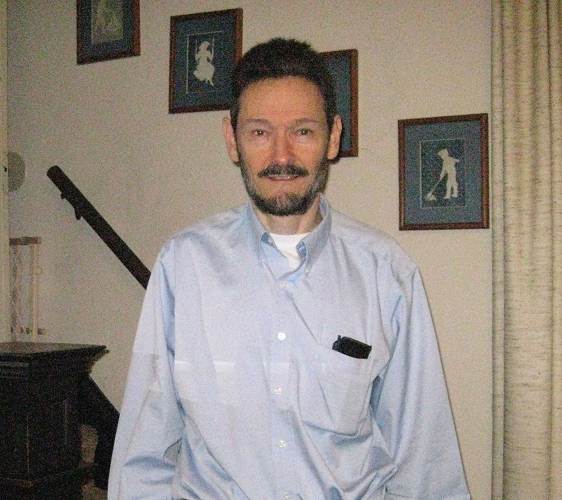
01a Walter Lewis
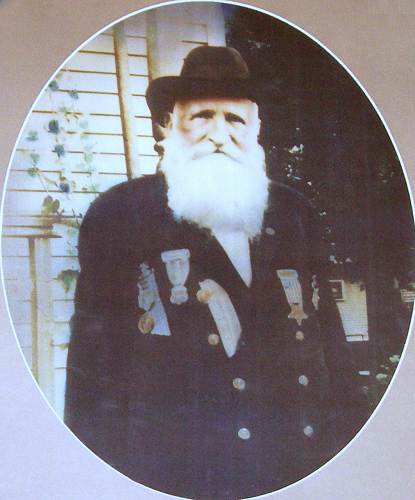
01b Squire John Ferguson Walter’s mother, Marion, was the daughter of John’s son, Frank Ferguson. She and Frank were raised in Iberia (photo 01c).
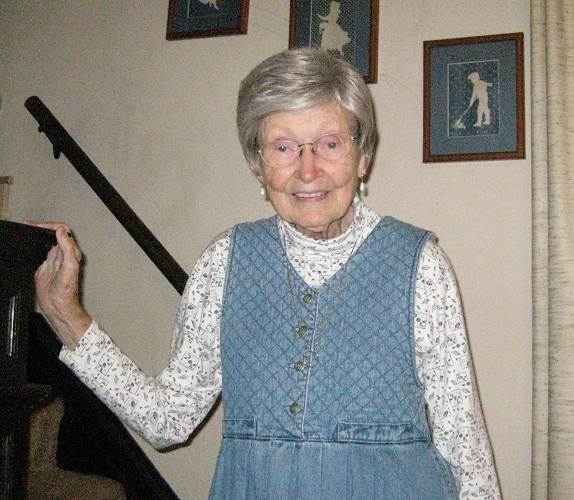
01c Marion Ferguson Lewis Walter told me he had access to a DVD which contained a number of movie film clips of Iberia and Miller County taken by the late Jim Eads of Iberia (photo 02).
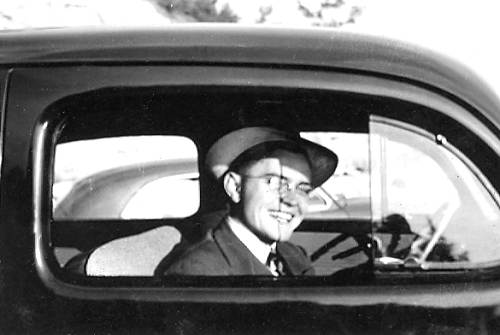
02 James Wendell Eads These film clips covered a number of years during the late 1930’s up through the 1950’s. Apparently, Jim was one of the first here or anywhere to use at that time innovative technology for taking home movies. In later years, before he passed away in 2006, Jim converted the film clips to a DVD accompanied by his own narration. I sent the DVD to my internet consultant, David Statler, who extracted the individual film clips and converted them to the Windows Media Video (WMV) format so that I could present them on our website.
Here is some supplemental information Walter sent me about his family:
Marion (Ferguson) Lewis
By Walter Lewis
January 2011
My mother, Marion Lewis, celebrated her 90th birthday last April. Although she is up in years, she still retains many detailed memories of people, places and events from the two decades she spent growing up in Iberia, Mo. My father, B. Gail Lewis, who also grew up in Iberia, passed in 2003. Luckily, I had made a few audio recordings of him reminiscing about his life in Iberia and experiences as a Navy officer during WWII. Realizing later how invaluable those recordings were, I set out recording Mom’s story as much as possible. Lately we’ve been spending several hours a week in Q&A sessions, covering every detail of Mom’s life, and what she knows of family history. It’s a spirit-lifting ritual that has brought Mom and I closer, and will provide future generations a rich connection to the past. Here is a synopsis of her biography:
“Marion Ferguson, youngest of three daughters of Frank C. and Clara M. (Groff) Ferguson was born in Iberia Missouri on April 6, 1920 shortly after her father returned from service in the Navy during WWI. Granddaughter of John “Squire” Ferguson, she was born the year prohibition went into effect, and saw its repeal at age 13. She was driving the family Model A Ford at 12 years old (with quite a lead foot, she admits). She experienced the Dust Bowl, Great Depression, witnessed the Iberia fire of 1939, graduated from Iberia Junior College , taught 2nd and 3rd grade at Iberia grade school, worked in a St. Louis munitions factory during WWII, got married and raised three kids while holding down jobs baby sitting, teaching, and working for the Army. For many years she taught Sunday school and was the church librarian. Now she lives very independently in the family home located in the St. Louis suburb of Webster Groves, drives the family station wagon, still shovels snow, and frequently gets visits from her children and friends.”
To make the film clips more interesting I would suggest that readers refer to the Progress Notes of August 10, 2009 where I previously discussed the Eads family and in particular Alf Eads, who started the first automobile agency in Miller County in 1913 (photo 03):
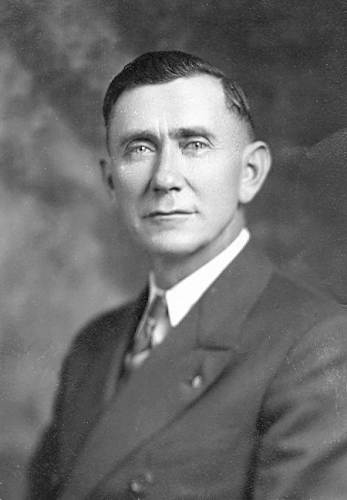
03 James Alfro Eads The first film clip is an introduction to the Eads family filmed at the Eads airport near Iberia. Jim Eads, son of Alf Eads, narrates the clip. For more details about the family members named I refer you to the website cited above.
The next video contains a film clip taken the day of the Miller County Centennial Celebration Parade in 1937 followed by a rare film clip of Squire John Ferguson, Iberia’s most famous patriarch. To better appreciate the film clip I would recommend reading our website’s presentation of the historical Centennial Celebration.
The Queen of the Centennial Celebration, Juanita Messersmith, was crowned by John Ferguson who was the leader of the ceremony (photo 04).
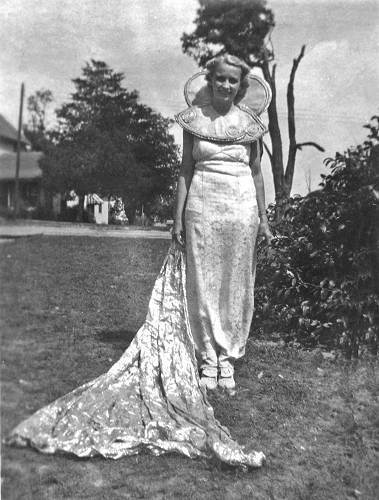
04 Juanita Messersmith - Queen of Centennial The second part of this film clip was taken of John Ferguson, maybe the only moving film ever made of him. You can read more about him at the biography section of our website.
The film clip is shot at a rapid pace so you may want use the pause control periodically.
The next clip is of the 1939 Iberia Fire. The fire began when a passerby lit a match for a cigarette near a Shell Oil tanker truck being gassed up at a service station. Paradoxically, the truck was being driven by Jim Eads himself, since his father owned the Iberia Shell Oil distributorship. Jim apparently kept his movie camera close by to be able to have gotten such dramatic footage of the fast paced fire which destroyed much of downtown Iberia. Before clicking on the video, I would recommend you read Peggy Hake’s description of the fire which is accompanied by some good photographs.
And here is the clip:
The next film clip, taken in 1937, was one of Jim’s first with his new camera. He was attending a baseball game in St. Louis when Dizzy Dean was on the Cardinal’s team. This was at the end of Dean’s career before he injured his foot. Although Jim says he lost the game it appeared to me his throwing arm and windup were intact that day. I had never seen a movie of Dean pitching. I am amazed at the huge windup and the speed with which he threw the ball.
Here is the clip:
You can read about Dean’s career at Wikipedia.
The next three film clips have to do with the interest of Alf Eads in airplanes. For background, in addition to the Eads story website I listed at the beginning of this narrative, I would recommend you also read Peggy Hake’s article about the Ead’s airport.
The first film clip is about a tragic airplane crash at the Eads airport sometime in the late 1930’s. Jim doesn’t identify the names of the two young men who were killed. I do have three photos from my files of the wrecked airplane which I will place below after you have seen the clip:
The Marion Ferguson mentioned by Jim in the clip is the mother of Walter Lewis mentioned above as the person who put together for us this wonderfully interesting collection of film clips shot years ago by Jim Eads. Here is a still photo of her at the plane crash scene extracted from the film (photo 05):
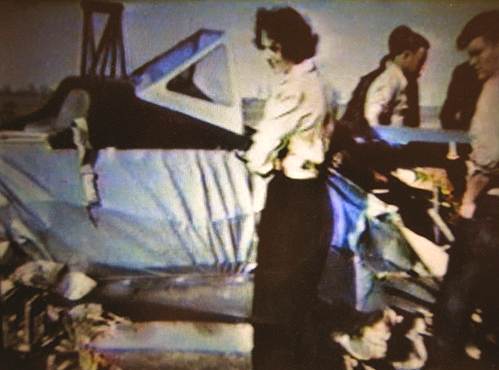
05 Marion Ferguson And here is Walter’s narrative of what his mother told him about her memories of the crash:
“Mom thinks she was about 18 years old when the plane crashed that killed the two young men. That would put the date of the crash around 1938. As to how she happened to be helping the doctor tend to the victims, she says she would meet him at the scene of an accident and hand him instruments and supplies as instructed, but would never work directly on victims. She had also helped him tend to a particularly bad crash involving a car full of men who were car pooling from work. She recalled that the shocking scenes didn’t bother her much at the time because she was concentrated on the task at hand, although some of it did bother her afterwards on reflection. Doc Gould didn’t pay her for her services. His wife Hilda normally assisted, but Mom would sometimes act as substitute, albeit in a limited capacity. The doctor was renting Mom’s grandparent’s (John and Carolyn Groff’s) old house on Main Street, just east of High, which she believes might be a factor in why she began helping him, but she’s not really sure how it started. That house, by the way, is where Doc Gould’s office was when the 1939 Iberia fire broke out. Mom and the doctor’s brother John, who happened to be visiting, carried a heavy examination table out of the office into the street, but fortunately the fire never reached that building. She reckons that adrenaline must have given them the strength to move the table, because it took about six men to move it back in. Her science teacher at Iberia Academy later used the incident as an example of adrenaline’s effects.”
Now, regarding the following photos, they were sent me by Peggy Hake who told me the photos were sent to her by Iva Hancock, who now lives in Springfield, Mo. In the first photo (photo 06) is a young man Iva thought might be Ray Howser.
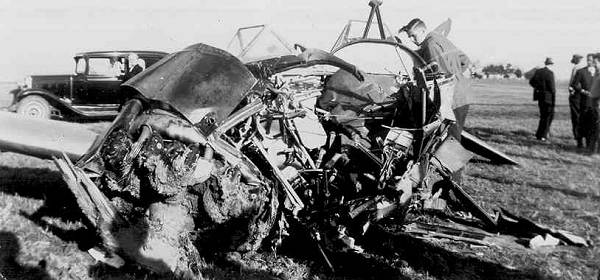
06 Ray Howser In the second photo (photo 07) on the right Iva thought was Don Walton and on the left she thought the person might be Glade Baird.
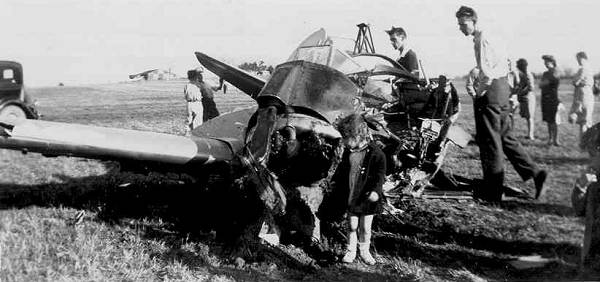
07 Glade Baird and Don Walton Iva could not identify the person in the third photo (photo 08).
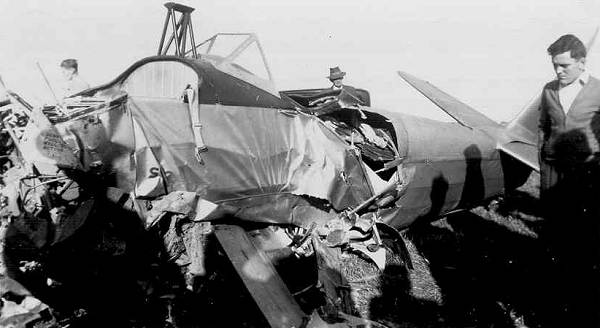
08 Unknown If you know anymore about these photos please let us know.
The next film clip features Alf Eads flying one of his first airplanes to the Union Electric airport below the dam and back again to his own Eads airport at Iberia. As best I can tell by comparing pictures, I don’t believe the plane in the film clip is the new Stinson airplane he bought later.
The last in this series of clips highlighting Alf Eads’ interest in airplanes was taken at an air show in the late thirties at Columbia, Missouri.
The next film clip is a short one of the Iberia Academy. In addition to the buildings shown also are featured Professor Smith, the inspirational genius who started the famous educational institution, and Gerard Schultz, the prolific author who wrote so many historical articles about the history of Miller County (photos 09 and 10).
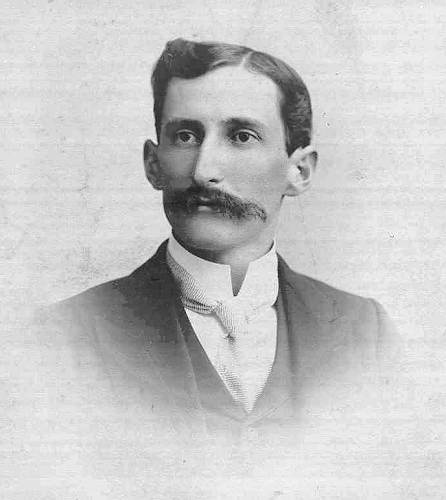
09 George Byron Smith - Iberia Academy
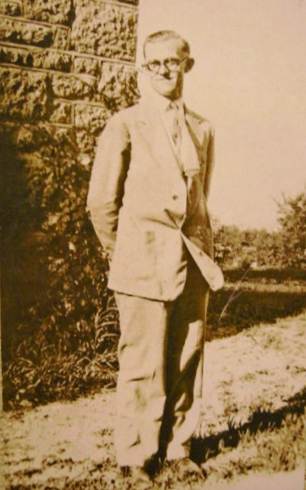
10 Gerard Schultz Here is the film clip:
You can read more about the Iberia Academy at this previous Progress Notes.
The next two short film strips are taken in front of the Eads garage in Iberia.
The next very short film clip is of personal interest to me. The first person identified by Jim is my mother, Susie (Bear) Pryor taken before she was married to my father, Harold Pryor. She is walking on the sidewalk which borders the Riverside Park in Tuscumbia. Her home, originally built by Phil Hauenstein, was just across the street. She told me that Jim and she dated once. The second person identified, Marjorie Sue Speedy, was a granddaughter of J. R. Wells, the famous Tuscumbia business man who was President of Anchor Milling Company, owned a large farm, and had a steamboat named after him. Her mother, Sue Wells Speedy, had married Tuscumbia attorney Walter Stillwell. After her mother’s marriage to Walter Stillwell, Marjorie Sue lived in Tuscumbia and finished her last two years of high school there.
The second part of the film clip is a short glimpse of the new Osage River bridge which had been completed just four years before in 1933.
The last film clip is a long one featuring events related to a farm equipment display sponsored by the Eads motor company. Many Iberia farmers will be recognized attending this event by those old enough to remember them.
Jim Eads, who filmed the above movie segments as well as narrated them, passed away in 2006. Here is the obituary which gives more detail regarding family members:
Obituary: Jefferson City Post Tribune, March 15, 2006
James W. Eads, age 84, of Iberia, died Sunday, March 12, 2006, at his home. He was born in Iberia on January 18, 1922, a son of James Alfro and Lou (Bond) Eads. On June 15, 1941, he was married to Betty Sue Hoops, who survives at the home.
He was born a Ford dealer and Shell Oil Company jobber and for over 60 years managed Eads Motor Company, which his father established in Iberia in 1913. He was a graduate of Iberia Academy and attended Iberia Junior College. He served as a board member for the Bank of Crocker and enjoyed raising cattle. Later in life when asked about retirement, he admitted he was slowing down, but retirement was not something he looked forward to or was even planning. He was quoted as saying, “My hobby is working”.
He was a member of the Iberia First Baptist Church and the Iberia Masonic Lodge #410 AF & AM.
Other survivors include two daughters: Judy Elliott and husband Dr. James W. Elliott and Karen Atwill and husband, Daniel K. Atwill all of Columbia; five grandchildren, Dr. Courtney Wright and husband, Randy Wright of Columbia, David James Elliott and wife Kristin Elliott of Delray Beach, Florida, Dr. Dana Wilhite and husband, Dr. Chris Wilhite of Raymore, Kirsten Craver and husband, Jeff Craver of Columbia, and Daniel Eads Atwill of Charleston, South Carolina; and six great-grandchildren, Brianne Wright, Ellie Wright, Avery Grace Elliott, Carter Wilhite, Cate Wilhite, and Harrison Craver. His parents, five sisters and one brother preceded him in death.
Services will be at 11:00 a.m. on Thursday, March 16, at the Iberia First Baptist Church. Rev. Glen Golden and Wayne Vaughan will officiate. Interment will be in Iberia Cemetery.
Visitation will be from 5-8 p.m. on Wednesday at Rekus Funeral Home in Iberia. Memorial contributions are suggested to the Iberia Cemetery or a charity of the donor’s choice.
We are certainly thankful to the Eads family and to Walter Lewis for allowing us to show these film clips to the readers of this website. In addition, much recognition should be given David Statler, my website expert, for having the skill and knowledge to place these old films on our internet site!
In one of Peggy Hake’s “Window to the Past” articles written for the Autogram, she reviewed the life of Mrs. Louie Clarke Lawson of Tuscumbia, who herself wrote a weekly column for the Autogram titled “The Real Rural Rustlers” (photo 11).
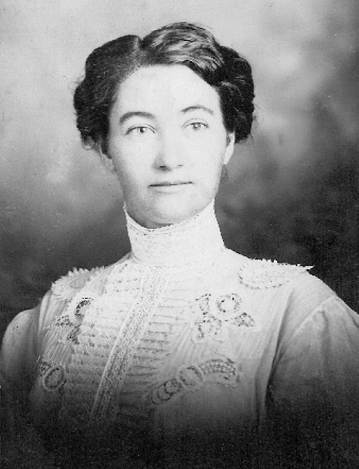
11 Louie Clarke Lawson Before I present Peggy’s article about Louie I will add some preliminary information about her.
I had known Louie and her family well having grown up in Tuscumbia. In a previous Progress Notes I presented some of her historical articles. These included a very interesting and detailed history of Tuscumbia to which Peggy refers in her article below.
Another of Louie’s articles I reproduced for our website was about her grandfather on her mother’s side, Jim Skinner, whose concrete tomb still can be seen at the side of the road between Tuscumbia and the 54/52 junction (photos 12 and 13).

12 James Skinner
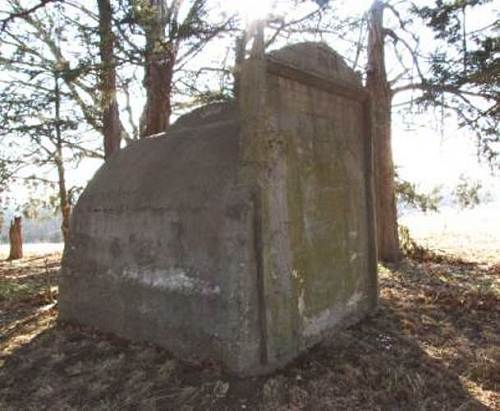
13 Skinner Tomb Louie’s father, Charles Clarke, had married Jim Skinner’s daughter, Louie’s mother (photo 14).
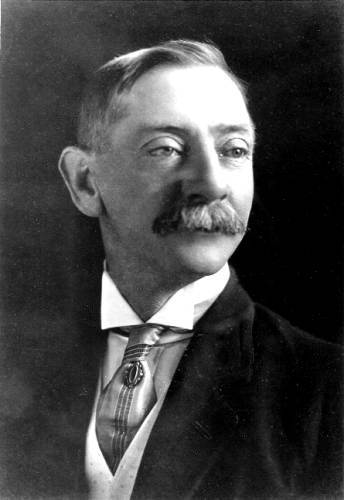
14 Charles Clarke Read more about Charles Clarke and the Skinner family as written by Mike Wieneman.
After that introduction here is Peggy’s article:
Window to the Past
Peggy Hake (photo 15)
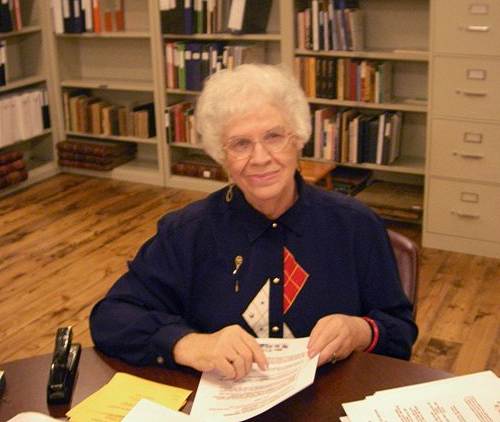
15 Peggy Hake For many years one of the Autogram’s most prolific writers was Mrs. Louie Clarke Lawson who wrote a weekly column called “Real Rural Rustlers” (photo 16).
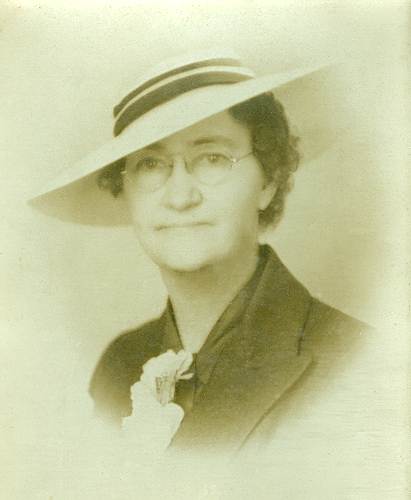
16 Louie Clarke Lawson She died at the age of 89 in 1969 after spending all her life in and around the Tuscumbia area. In 1960, at age 80, she took time to remember and then write about her memories and childhood in Miller County’s seat of government. Her story was wonderful to read and she called it “Miller County Seat Town Grew From Log trading Post.”
While reading through her articles I discovered something I did not know about Tuscumbia. Perhaps some of you older folks may remember being told about the town’s isolation and divisions! It was built in four different locations that formed sort of a ‘zig-zag’ pattern. The part of Tuscumbia built on the east end was called “Crackerneck;” the west end was known as “Possum Flat;” across Shut In Slough it was called “Goose Bottom;” and then the location of the courthouse, on the high bluff, was called “On The Hill.” Many little towns had the reputation of being built on each side of “the tracks,” but Tuscumbia was quite unique in having four different locations where one may have been born!
Note: For those who might be interested about the four different areas of Tuscumbia described by Peggy, I have some hand drawn maps in which my mother, Susie Bear Pryor, identified homes in these areas of Tuscumbia during the 1920’s and thereafter. In addition to the four areas designated by Peggy, I would add a fifth area: those structures along the Osage River bank. Some people have included the Osage River bank area as being part of Crackerneck because usually one or more taverns were located there. It was said that the Saturday night fights explained the origin of the Crackerneck name. But this name also is used for the area of the homes on up the hill to the north; so who knows?
To make it easier to recognize them I typed the handwritten names for each tracing. Just click on the photo's caption to view it. They follow a left to right/top to bottom organization.
One thing to remember is that most of the older homes in Tuscumbia (probably the same as elsewhere) have had several different owners or inhabitants in their lifetime. Sometimes the same person or family will have lived in as many as three different houses during their lifetime in Tuscumbia (photos 17 - 21).
Mom also mapped out the homes “on the hill” in the area of the school and the homes on the east and south side of the courthouse located at the end of High Street (photos 22 and 23).
Here is an old photo of High Street taken from the north end of the courthouse (photo 23a):
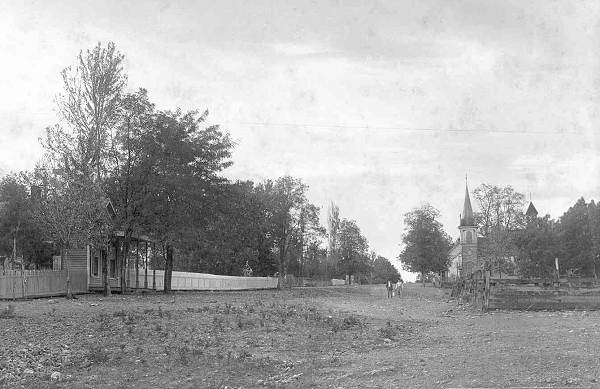
23a High Street - Tuscumbia Notable homes in the Possum Flats (or Possum Trot) area included those of George Nichols and Charles Clarke (photos 24 and 25).
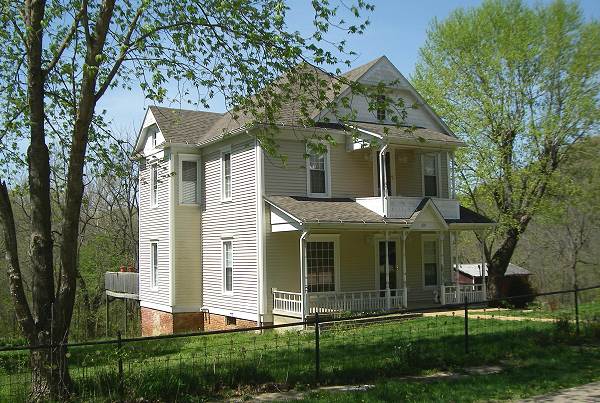
24 George Nichols Home
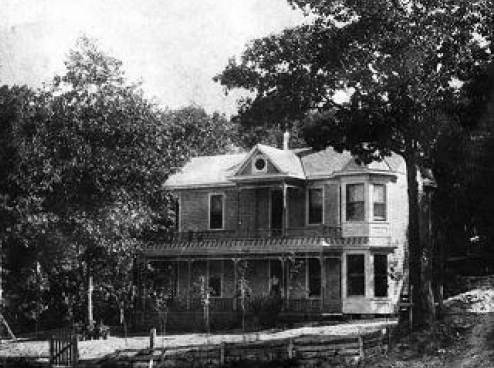
25 Home of Charles H. Clarke In Goosebottom were located the homes of Bob Marshall, William Hauenstein, and Phil Hauenstein (owned by Madison Bear in the ‘20’s) (photo 26).
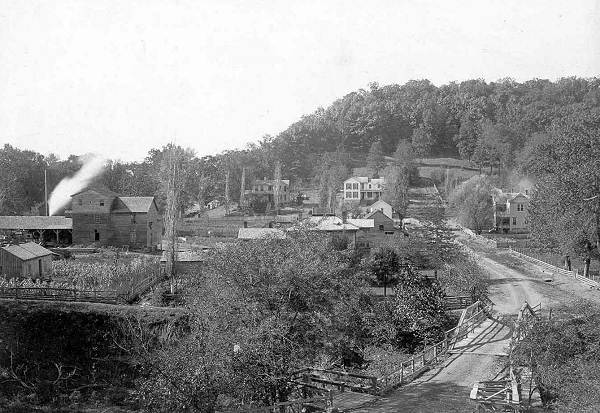
26 Goosebottom on Hill in Background - Marshall, Wm. Hauenstein and Phil Hauenstein Homes Dr. McGee’s home is well seen on the left in this photo (photo 27):
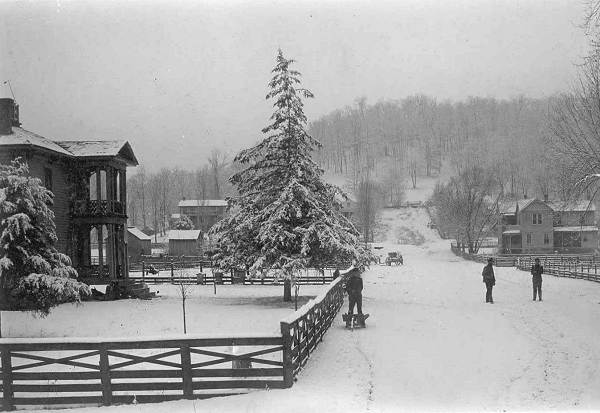
27 McGee House on Left - Phil Hauenstein House on Right - Marshall Home distant Left The next photo (photo 28) is one of the oldest we have of Goosebottom Street:
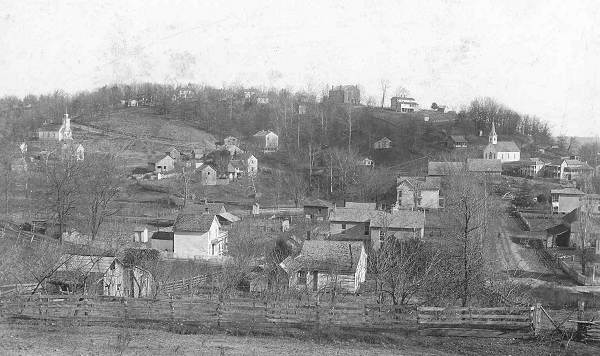
28 Goosebottom looking East - Helton and McGee Homes opposite sides of Church end of Street In the far distance you can see the old brick courthouse finished in 1859. At the far end of Goosebottom toward town the house on the right is Dr. McGee’s. The house across the street from the McGee home, at a later time than the photo was taken, was owned by David Helton.
In the early 1900’s the George and Ida Hauenstein home was added to the north of the Bob Marshall and William Hauenstein homes. In this photo taken behind the house from the top of the hill you can see immediately in front of it the Phil Hauenstein home, then up the street on the left the Helton/Kouns home, and beyond that the old bank (photo 29).
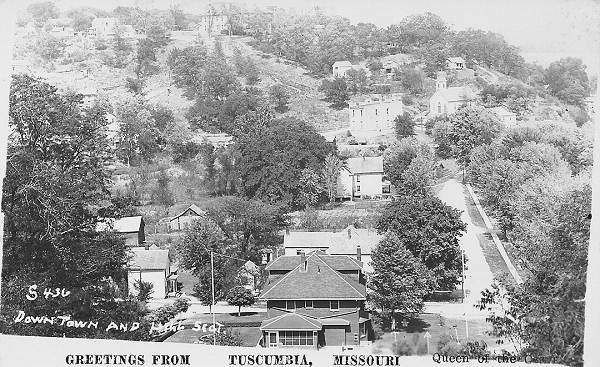
29 Goosebottom looking East from top of Hill Here is a photo of the house from the front (photo 29a):
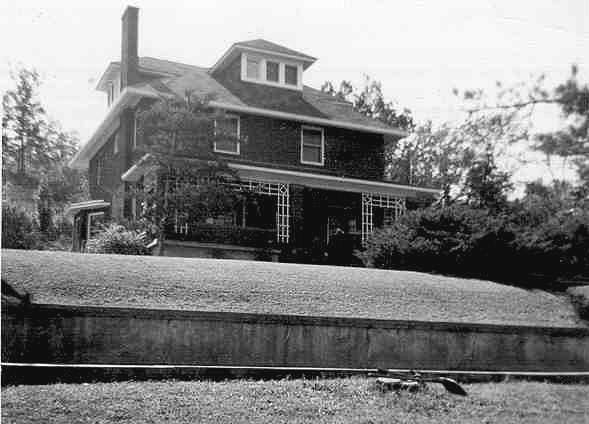
29a George and Ida Hauenstein Home In the Crackerneck area one of the notable homes was that of Frank Fendorf (photo 30).
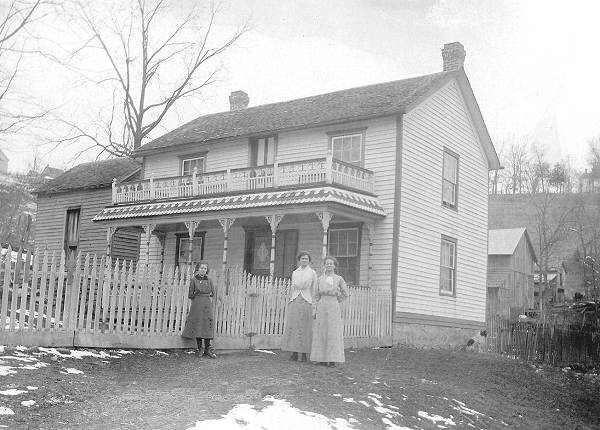
30 Frank Fendorf Home Another was that of Ed Kallenbach (photo 30a).
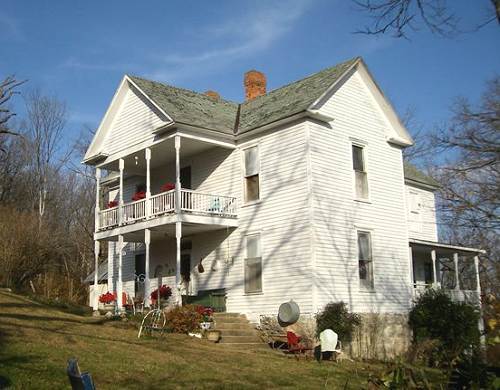
30a John Edward Kallenbach Home in Tuscumbia Peggy continues:
Louise/Louie Clarke was born in a log cabin on the bluff side of Tuscumbia to the back of the old Presbyterian Church.
Note: In photo 28 the cabin would have been on the hill side behind and to the right of the Presbyterian Church which is seen on the hill above the beginning of Goosebottom Street.
The area was probably considered part of “Possum Flat.” She was born November 17, 1880, the second of four children born to Charles Henry Clarke and Isabella Skinner (see photo 14 above). Her father was a native of London, England and came to America in 1871 at the age of 19 years. When he first came to Miller County, he lived with the family of William Hauenstein, Sr. whom everyone called “Grandpa Hauenstein” (photo 31).
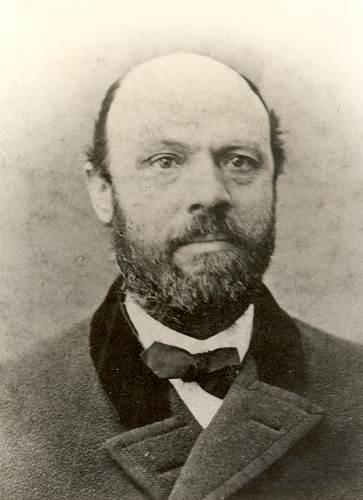
31 William Hauenstein, Sr. 1822 - 1913 Charles worked for Mr. Hauenstein for a few years in his general merchandising store. About 1879, Charles was a ferryman at Tuscumbia (per Schultz’s History of Miller County) (photo 32).
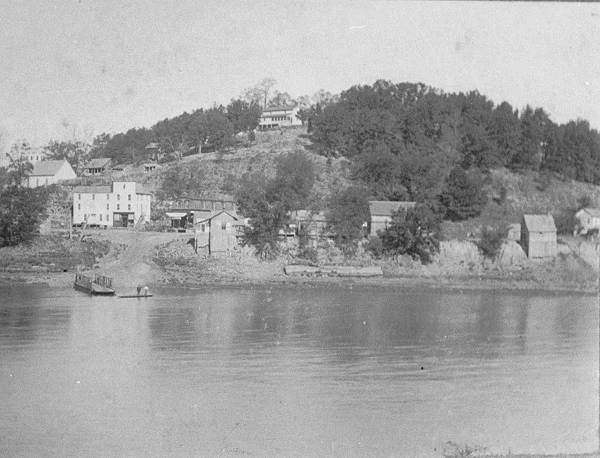
32 Ferry Landing at Tuscumbia Later, he became a “drummer” (traveling salesman) who traveled around the country with his hack and team selling ready made clothing, especially men’s suits. At the turn of the century, Charles served as Miller County Clerk (1899-1906).
Note: There is a wonderful old photo in existence showing Miller County’s official family, taken in 1901. The nine men are shown sitting on the wooden steps that entered the original brick courthouse on the south side of the building, facing the Osage River (photo 33).
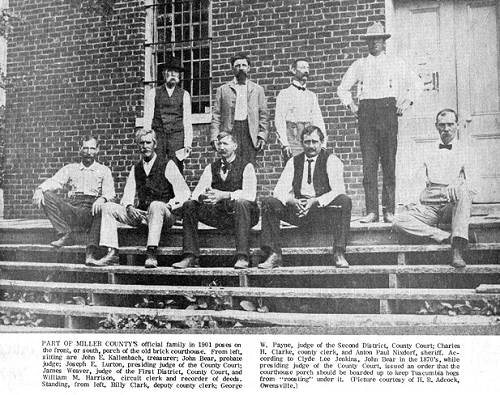
33 County Officials 1901 - Charles Clarke Third from Left Standing
Click image for larger viewThe men pictured were: sitting: John E. Kallenbach, treasurer; John Bear, probate judge: Joseph E. Lurton, presiding judge of the County Court; James Weaver, judge of the first district of the County Court; William M. Harrison, circuit clerk and recorder of deeds. Standing are Billy Clark, deputy county clerk; George W. Payne, judge of 2nd district; Charles H. Clarke, county clerk; and Anton Paul Nixdorf sheriff.
When Louie Clarke was about 5 or 6 years old, she remembered her family lived in a large house that sat against the river bluff across from the Hauenstein Store. Her mother, Isabella Skinner Clarke, operated a restaurant on the first floor of their home and the family lived on the second floor, which opened into the bluff (photo 34).
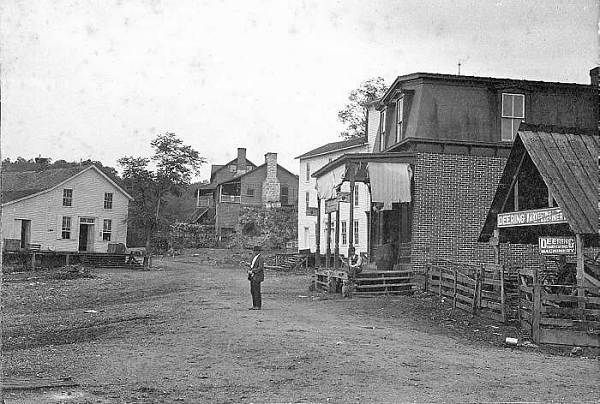
34 Clarke dwelling far side of white Building Louie’s mother, Isabella, died at the early age of 26 years in March 1886. She was a daughter of Mr. and Mrs. James Skinner of Skinner Ridge in the Flatwoods community northwest of Tuscumbia. Isabella left Charles with three young children to rear. Their oldest child, James, had died in 1880 at the age of 16 month. Both Isabella and her young son are buried in the Skinner Family Cemetery facing Highway 52 a few miles south of Eldon. The three surviving children were: Louise/Louie b. 1880 m. James Claude Lawson 1902; Lillie b. 1882 m. Xenephan X. McGee 1905; and Charles Oliver b. 1884 m. Myrtle Burris.
Note: Read more about the Skinner Cemetery as written by Peggy Hake.
Charles Henry Clarke married Mattie J. Clark on November 5, 1890. She was 18 years old and was about 20 years younger than Charles. They had at least two daughters, Lura born in 1893 and Mabel born in 1899. There may have been more children that I do not know about, born after the census of 1900.
Louise/Louie had wonderful memories of her father…She told her children their Grandpa Clarke was a great promoter of the annual Christmas tree which was put up at the courthouse each year. She said, “He talked me out of a toy more than once so that every child gathered at the Christmas celebration would get a toy that night.
Note: In later years Charles Clarke built a new home in the Possum Flats area where he also developed some lots. This area was called the Clarke Development. Here is a photo of the home (photo 35):
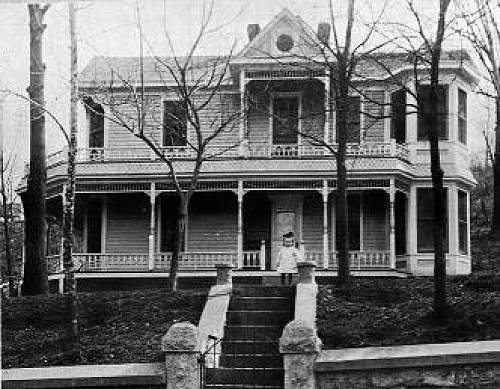
35 Charles Clarke Home - Later purchased by Edward Clark Louise/Louie Clarke married James Claude Lawson on April 3, 1902, the marriage performed by Benjamin F. Lawson, a justice of the peace (photos 36, 37 and 38).
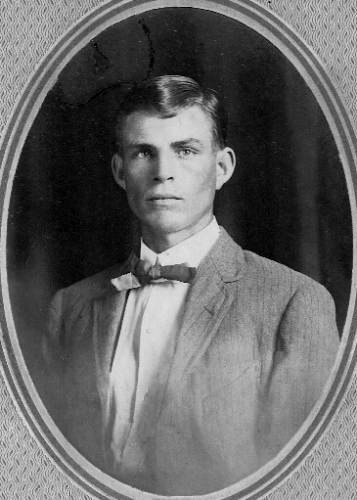
36 Claude Lawson
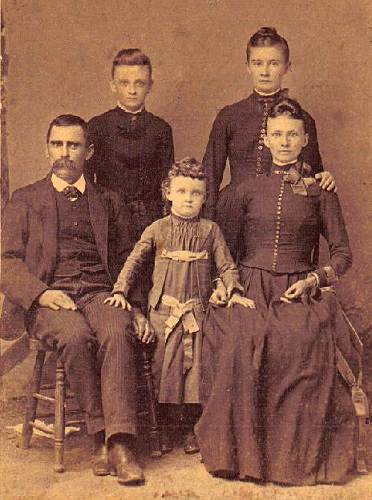
37 Benjamin F. Lawson and Arena Ellen Tarbutton
Children: Emma, Lena and Lucy
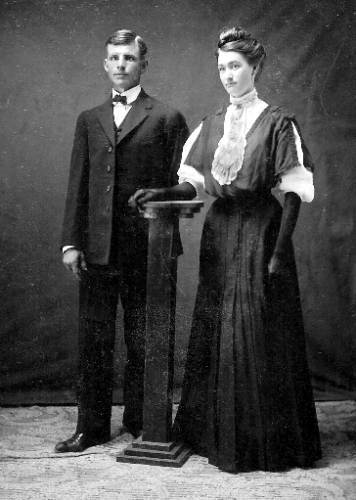
38 Claude and Louie Lawson James Claude was the only son of Samuel T. and Caldonia (Meredith) Lawson (photo 39).
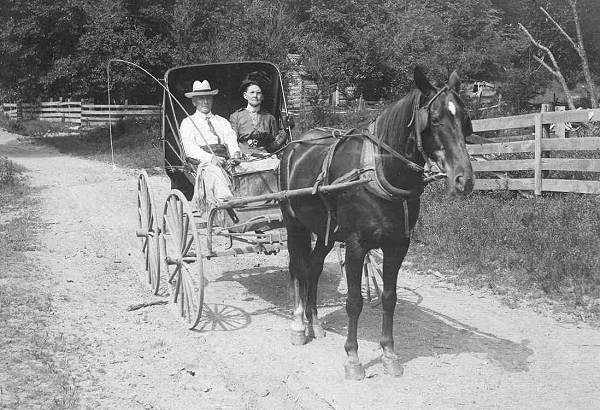
39 Samuel and Caldonia Lawson Samuel and Caldonia had a daughter named Maude who died at the age of 2 years in 1880. James and Louie lived upriver from Tuscumbia on the Lawson farm where all their children were born and reared. It has remained in the Lawson family for well over 100 year. Marsha Lawson Dinkens, Louie’s great granddaughter, lives on the farm today.
Louie and James Lawson were parents of four daughters and one son Toliver Lawson (photo 40), Wilma Lawson (Mrs. Frank Harbison); Lillian Lawson (Mrs. Delbert Miller); and Jo Louise Lawson (Mrs. Wes Pfiffer.) Today, Jo Louise is the only surviving child of the Lawsons (photo 41).
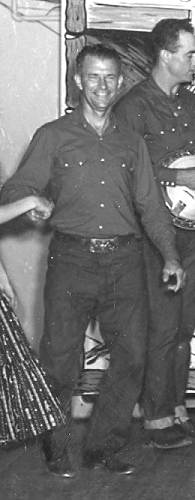
40 Tolliver Lawson
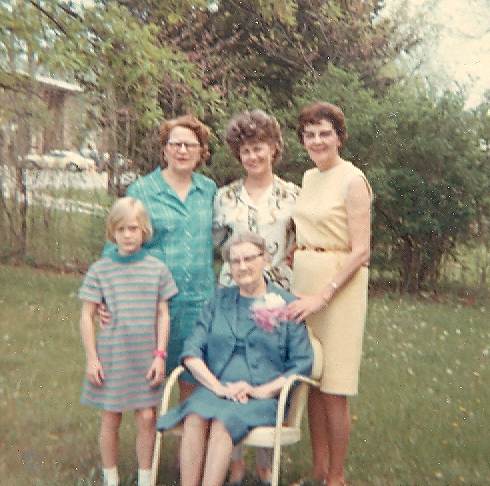
41 Lillian Miller, Jo Louise Pfiefier, Maude Teagarden and Louie Lawson Sitting Note: Since Peggy wrote this article all of Louie and Claud's children have passed away.
Louise/Louie Clarke Lawson lived until 1969 when she passed on, almost reaching her 90th year. James Claude, her husband of 59 years, preceded her in death in 1961. They are both buried at Tuscumbia Cemetery near other members of the Clarke and Lawson families. Louie had traveled many years but only a short distance from the days of her childhood in Tuscumbia’s “Possum Flat;” upriver from Tuscumbia a short distance to the Lawson homestead; and finally to her final resting place “On The Hill” in the town of Tuscumbia.
Note: My sincere thanks to Mrs. Helen Slone of Eldon for some of the information in this article.
Thanks Peggy for this summary of the life of Louie Clarke Lawson, one of our county’s really interesting citizens. You can read more about the Lawson family at this previous Progress Notes.
Last week I featured another of Peggy Hake’s articles which was about the DeNoya family which migrated to Miller County from Callaway county because of a Cholera epidemic and famine. Peggy wrote that she was told this story by a Tuscumbia man named John Pickering. Well, to my surprise, my mother, Susie Bear Pryor, knew John Pickering. She wrote me the following anecdote about one of her memories of him:
In your Progress Notes of last week, Peggy Hake referred to a gentleman by the name of John Pickering. He had told her about the famine up in Callaway County and the migration of his family to Miller County. I knew John Pickering. I was a very young child & John Pickering would come in our 'old store,' the one that was known as the old Woodman Hall bldg. This was when my folks had their General Store there. Well I'm sure I hadn't started school yet & I've told you about Mom working in the store so of course us kids went down there with her & I was always seeing lots of people when they would come in to trade. This Mr. Pickering was talking to my eighty some year old Grandpa Bear (David Christian Bear) who also was always in the store. They were sitting there talking to each other & John was talking about something that made me feel sorry for him. I think he had just taken a bite of my Grandpa's twist of tobacco that Grandpa had given him and I well remember going behind the counter & getting a new twist of tobacco out of a box that was sitting there with a whole bunch of others that were for sale. I remember bringing it out & handing it to him & he was of course surprised & he reached out his hand & said to me, "Well, thank you, Little Girl". The onlookers were sort of surprised but so was my Mom. I don't know why but that is a memory indelible in my mind. I also remember him telling my Grandpa that his wife didn't have a blemish on her. I had never heard that word attached to a human although many times about an animal. He came into our store a lot to loaf. I sure was young but I also knew the vicinity they lived in. He walked to town from out in the country even though he was an older man.
That’s all for this week.
 Joe Pryor
Previous article links are in a dropdown menu at the top of all of the pages.
|

